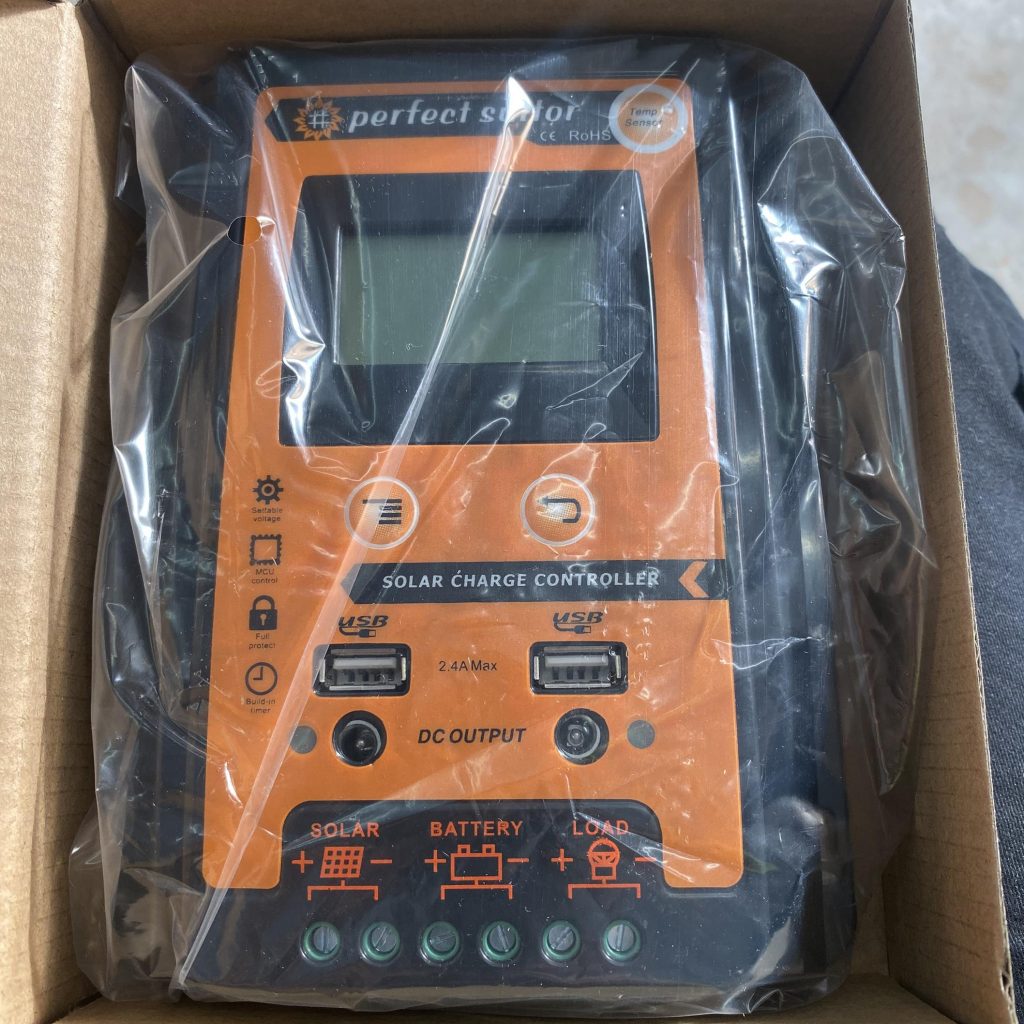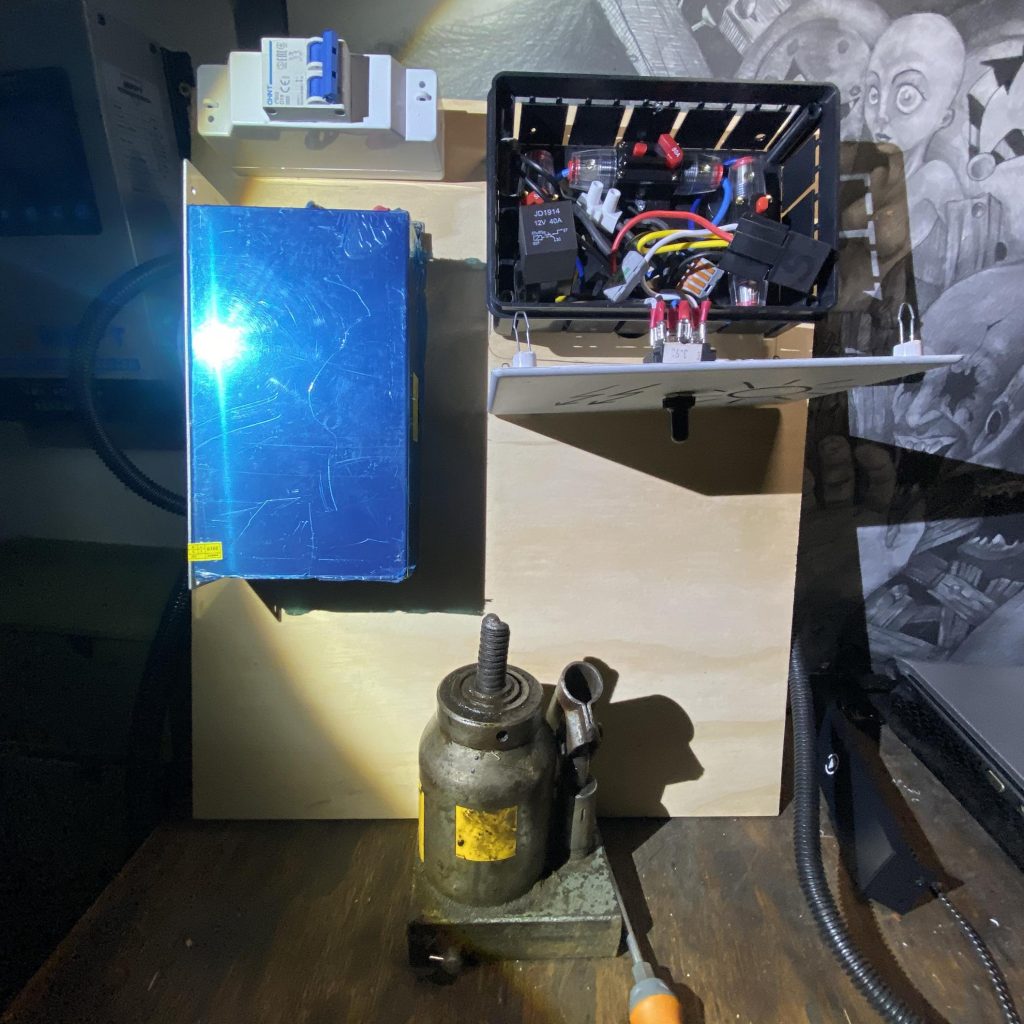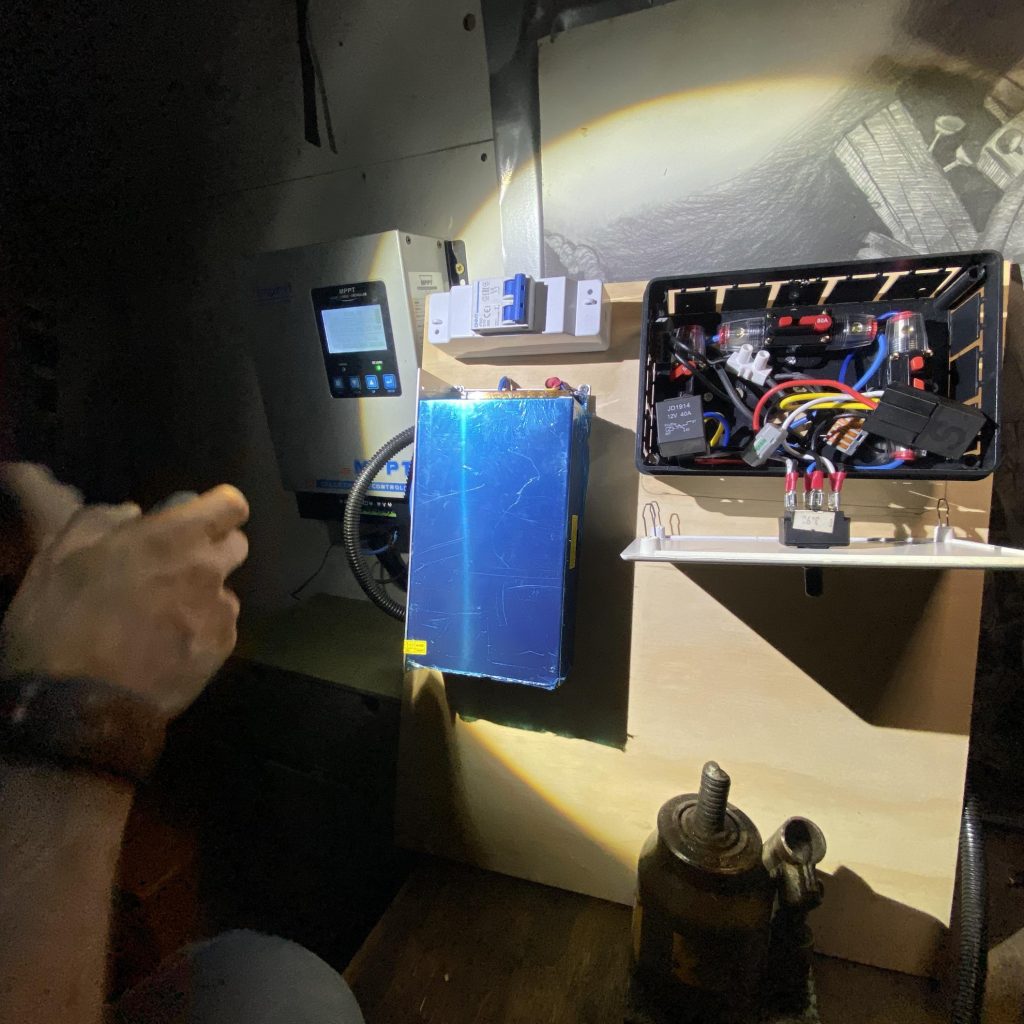
Leather handicraft straight from the workshop on four wheels
Wandering through Iberian lands
Fight for electrical independence. How we forced the sun to cool our beer.
15/02/2020 6:00 PM
Today we will tell you about the electrical installation that we have in our van and which was created from scratch by us, without the help of any specialists. We went back to the high school times: drawing circuits, relays, controllers, amps, watts and we created something special. Today we want to tell you about it in this article, but remember that we are not professionals in the field of electricity. We are just writing with hope that maybe someone will learn from our mistakes. This entry was actually created "on request". Recently a lot of people have been asking us about the electricity in our house on wheels, so.. here we go!

Because we started our journey a bit "suddenly" we did not fully prepare for everything the way we should. Our first electrical installation was really poor and what's worse we didn't even know about it. After 3,5 years we decided to make an extreme makeover of our van and that's when JJ built a completely new installation. It turned out that the people who helped us with the first one, were not professionals that we believed they were and they claimed to be, but some pseudoelectricians. But we learn from out mistakes. So what exactly went wrong?
At first we had a 100Ah battery, 300W panels and a 12V installation, which also included an inverter that allows connecting 220V devices. Unfortunately, we have been misinformed that a 220V fridge can function normally and there will be no problem with it! Yes, from the very beginning, from the first kilometers there WAS! Why? Because the inverter can be turned on for a while, for example, when we want to use a blender or connect a larger speaker. Current inversion, with commercially available inverters, is inefficient and generates large energy losses. The fridge, which required the inverter to run 24 hours, caused our battery to discharge every day. Of course, we had solar panels on the roof, which logically do not charge at night, so the fridge would deplete all the resources accumulated during the day. We were able to deal with this problem quite quickly because, being on a camping site, we found Chapi's leaflet (we highly recommend the ChapiVan Almeria workshop - if you are in the area and have a problem with your van). Chapi helped with some other problems we had and sold us a 12V fridge for 500 EUR which in Spain is the normal price. The „strawberry fields forever” was just about to start…
The next problem appeared when we reached Portugal and we were driving down its southern coast in the wall of rain. It was just raining cats and dogs. Our solar panels unfortunately do not work with rain and clouds, so those terrible autumn evenings and nights that we spent playing HOMM3, were accompanied by the noise of the engine and the smell of diesel. Why? Because it was the running engine which saved us from our battery oppression. The worst possible solution! You inhale stinking fumes for an unknown amount of time but because this charging is inefficient: it takes ages, it's low and the battery, just after turning the engine off, discharges again. We do have, even now, our rear battery connected to the alternator and when we drive it is charging, but using this solution in the parking lot is not recommended.
Problems with electricity have helped us establish one very important relationship. It was a moment when, due to heavy rains and neverending problems with power, we used to go once in a while to the camping to charge the battery. Sometimes we got help from kind and helpful people encountered along the way. That's how we met Yiyi, a person that is still our close friend, and who one November night let us use his eletricity and provided us with access to power when we most needed it.
Let me remind you that our previous installation consisted of a battery with the capacity of about 100 Ah (honestly speaking, we do not remember exactly) and 300W solar panels. Now we know, that it was not enough. Wrongly connected elements of the entire installation led to the fact that after just one year we were forced to buy a new battery because that old one simply died. What does it mean? That after a whole day of loading the battery would be empty just after one, maximum two hours, after the sunset. We bought a new battery and continued to use in the exact same way. When we used a computer in the evening or night, the battery would discharge almost to zero every day. It was like that from the very beginning so it just seemed normal to us. Like before, after replacing the old battery with a new one, we would sometimes go to the camping to do the laundry and to charge the battery.
So what exactly did our installation look like and what was wrong with it? On the roof some "experts" installed us two solar panels. They did not use a special glue or a special fixing system - they drilled holes in the roof and "sealed" it with silicone. Because we do use the car to move around, the screws „work” all the time and the water started to pour inside through each hole. During the first rain (just 400km from departure point), it turned out that we had to sleep with buckets and bowls, the mattress was soaked and inside an umbrella was as necessary as outside. We were able to buy black glue for fixing the windows and somehow "seal" the holes in the roof. From now on we had to do it regularly, whenever it rained heavily.
These two, badly installed, solar panels had a total power of 300W and were connected by the "professionals" with the PWM controller, which was badly connected to the rest. Why? The controller is used to turn off the power supply from solar panels to prevent overcharging the battery. On the other hand, all devices should also be connected to it so that the controller can turn them off, preventing deep battery discharge, which in the long run leads to cell damage (if repeated systematically). Our devices were connected directly to the battery, bypassing the controller, and of course, used to completely discharge the battery almost every day (that's why we had to replace it so quickly).
What other mistakes we made? Well, we had very few devices that could operate in a 12V system. We even missed a laptop charger and each time we had to use the inverter to charge it. Secondly, both batteries, which we used before the present one were not „sealed” (I do not know what it is called professionally). Why was that a mistake? Well, when discharging this kind of a battery produces gases, which should not be inhaled. In such a small space it is simply dangerous to your health. It happens especially with quick discharge, e.g. through an inverter.
After changing two batteries, the fridge and having the rain inside our house we finally decided to make an extreme makeover of the entire van. We changed the furniture, repainted the whole thing inside, did some work with the rust that we had all over the roof and much more (we would definately want to share more of those topics with you if you are interested but maybe on some another occasion). The most important part of this renovation was a new electrical installation that JJ prepared from scratch after many, long night of reading and learning. What does the installation look like now?
We have one additional panel (total power 600W), which is connected to the new controller through a 40A switch with a fuse (according to the controller manual), which will turn off if the charging exceeds 40 A. We have not yet had such a high charge, we will see how it goes in the summer. In the winter months, in the south of Spain, we oscillate from a few amperes to 25 depending on the weather. We have a different type of controller - MPPT (exactly this one - click) which is generally a better choice than PWM. This choice is more expensive, but over the years, if you are planning energy independence, you will see that you saved money because the battery is less used.
Here, by the way, we would like to warn you about the controller, which is shown in the photo below. We ordered it on Amazon and only then we found a video on YouTube, in which it is dismantled into parts and it turns out that it is not an MPPT controller at all. We got tempted by a very low price (it was the only so cheap controller that theoretically was suppposed to be MPPT one) but now we know that MPPT must be more expensive. We were able to return it without problems.
Worth watching, it is beautifully explained why this is not an MPPT controller

The new battery is also a different type of battery than before - we now have sealed one, gases are in a closed circuit and we do not need to inhale them, and in addition it has a capacity of 250aH - type AGM (this one - click). All devices that we use every day are connected to the controller, which in the event of excessive battery discharge will simply turn them off. When the need arises, there is an inverter (the same one because, surprisingly, it was good), to which we can connect anything that runs on 220V (for example drill driver charger). When we use an external power source (we rarely go to camping but sometimes we have access to electricity in one beach bar where we spent last winter) we just use one switch and all the devices that were connected with 12V work, thanks to the transformer, with 220V. In this case our battery is completely omitted in this situation and can „relax”. It is also an upgrade compared to our previous installation because before, when we used electricity at the campsites, we used to charge the battery and still use it (light, fridge) - only the laptop was connected directly to an external source.
We bought everything on Amazon because it is in Spain, where we currently live, the best place for any shopping of this type - works quickly, you can order your packages to the pick-up points (you do not need to have an address, which in our case is the decisive factor), couriers come even to the beach and with the Prime option, which we use, the shipment is always free and the products usually gets into our hands within two days from ordering. No, we don't work for Amazon 🙂




